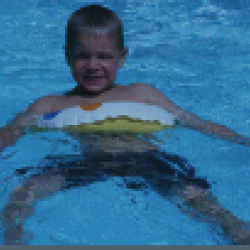Source Institutions
Source Institutions
Add to list Go to activity
Activity link broken? See if it's at the internet archive

In this investigation, learners explore the force known as buoyancy by placing various objects into water and observing how they behave (for example, which sink more quickly, which float, how much water they displace and how air plays a role in keeping objects afloat). The introduction to the lesson tells the story of Archimedes, the Greek mathematician, who first discovered the law of buoyancy while attempting to determine the mass of a crown of gold.
- 10 to 30 minutes
- 30 to 45 minutes
- $1 - $5 per group of students
- Ages 8 - 14
- Activity, Lesson/Lesson Plan
- English
Quick Guide
Materials List (per group of students)
- marbles (15 per group)
- medium to large plastic container--open topped, filled with water
- 1/2 stick of clay
- small airtight jar or bottle
- pan balance or scale
- student journals and writing tools
Subjects
-
Earth and Space Science
-
Earth Structure
- Oceans and Water
-
Earth Structure
-
Physical Sciences
- Motion and Forces
-
States of Matter
- Liquids
-
Structure and Properties of Matter
- Mass and Weight
- Volume and Density
-
The Nature of Science
-
The Scientific Process
- Asking Questions
- Conducting Investigations
- Gathering Data
- Formulating Explanations
- Communicating Results
-
The Scientific Process
Audience
To use this activity, learners need to:
- see
- read
- touch
Learning styles supported:
- Involves teamwork and communication skills
- Involves hands-on or lab activities
Other
Components that are part of this resource:
Includes alignment to state and/or national standards:
This resource is part of:
Access Rights:
- Free access
By:
Source Collection
- Science After School Consumer's Guide
Rights:
- All rights reserved, State of New Jersey, 2006
Funding Source:
- No Child Left Behind Act of 2001
